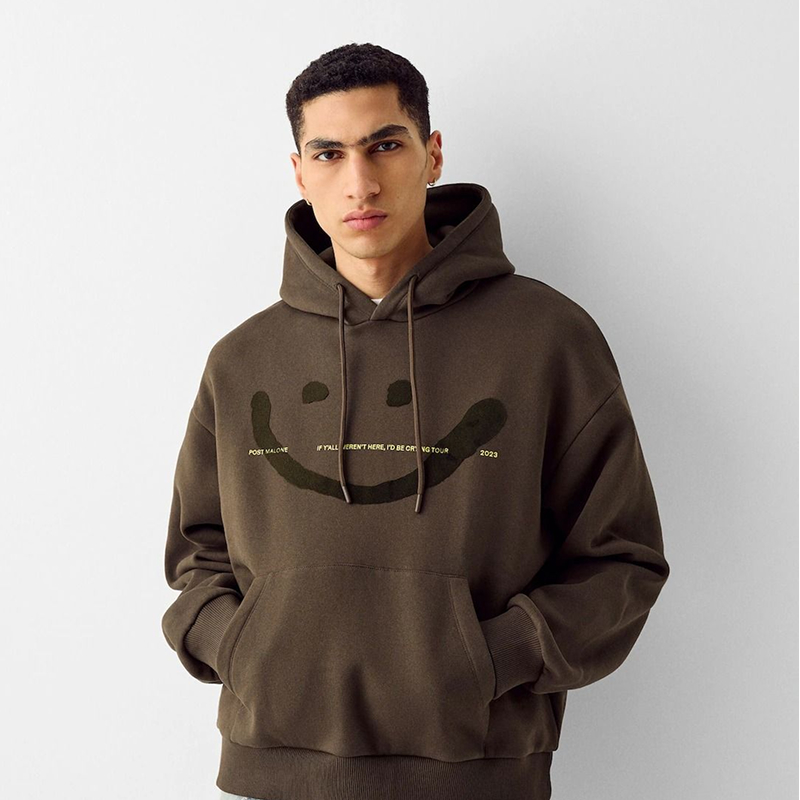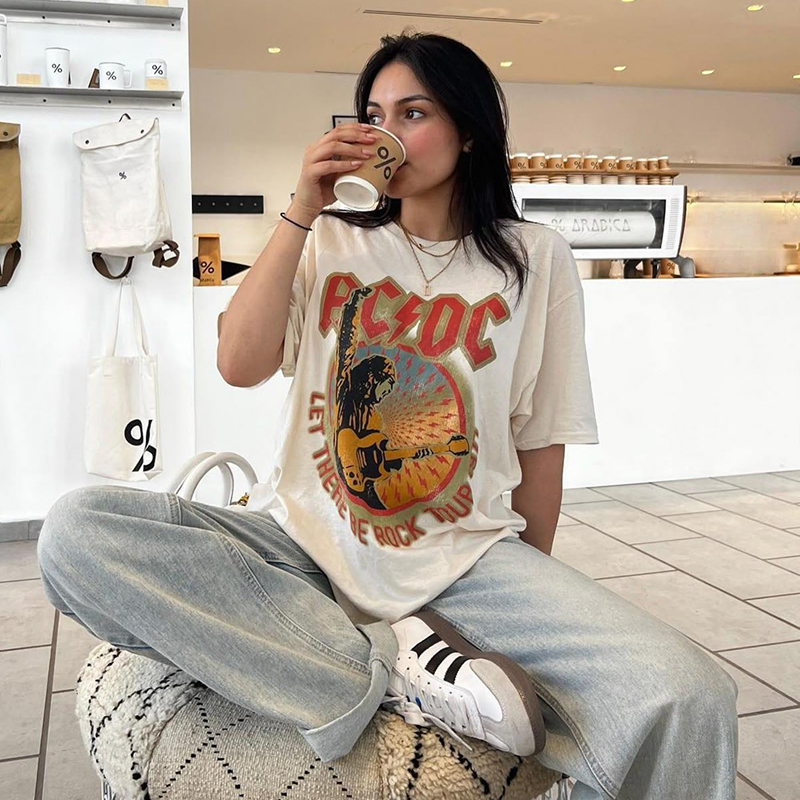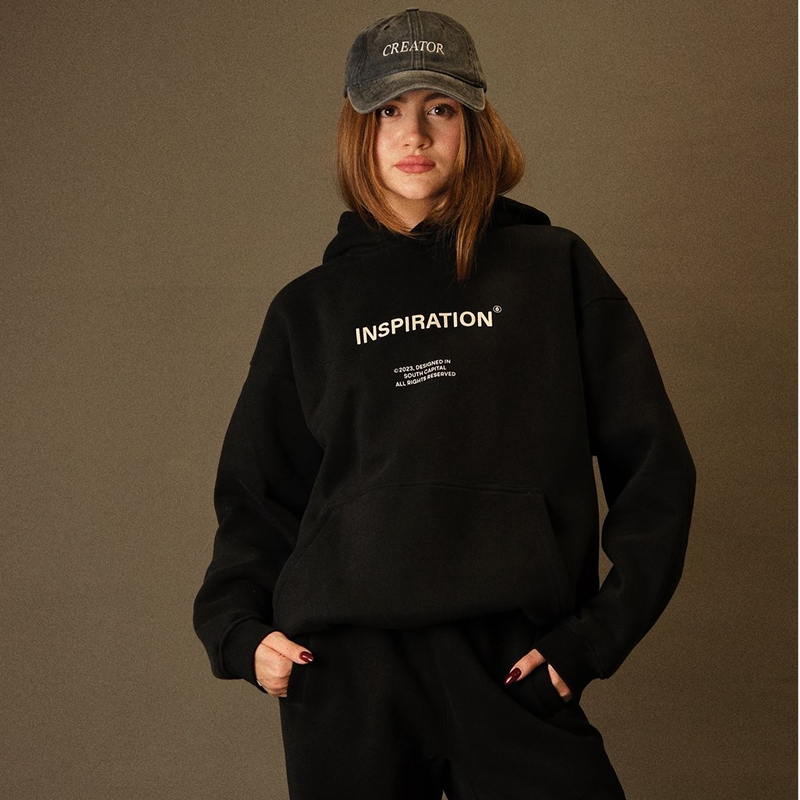Introduction: Comfort Becomes the Currency of Fashion
In the 21st century, fashion has shifted away from rigid formality and toward comfort-driven clothing. The T-shirt and hoodie, once humble basics, have become symbols of this global shift. As society balances digital lifestyles, sustainability concerns, and new technologies, these garments are being reimagined for the future.
This essay explores how comfort, sustainability, and digital culture are shaping the evolution of T-shirts and hoodies. We will look at how they are produced, how they are worn, and how they will continue to define fashion for decades to come.
Chapter 1: Comfort as a Universal Language
T-Shirts – Second Skin of Modern Life
The T-shirt is universal because it feels like a second skin. Whether plain, printed, oversized, or fitted, it adapts to every lifestyle. Its simplicity is its strength.
Hoodies – The Armor of Relaxation
The hoodie provides both physical warmth and psychological comfort. Pulling up the hood can create a sense of privacy, even in public spaces. In a fast-paced digital world, the hoodie represents personal space and casual security.
Comfort has become a cultural value, not just a clothing trait.
Chapter 2: The Rise of Digital Lifestyles
Work-from-Home and Casualization
The pandemic accelerated the casualization of dress codes. T-shirts and hoodies became the uniform of remote work. Zoom meetings normalized hoodies paired with professional backdrops.
Gaming and Esports Influence
Gamers and streamers wear hoodies as part of their digital identity. Esports teams release custom hoodies, merging performance wear with fan merchandise.
Virtual Fashion
Digital platforms like Roblox, Fortnite, and metaverse experiments allow users to buy virtual hoodies and T-shirts for avatars. These items carry cultural and economic value even though they don’t exist physically.
Chapter 3: Sustainability – The Future’s Most Urgent Demand
The Environmental Cost of Basics
- T-shirts: Billions produced annually, consuming cotton and water.
- Hoodies: Often blended with polyester, contributing to microplastic pollution.
These garments, precisely because they are so common, create massive environmental footprints.
Sustainable Materials
- Organic cotton reduces chemical use.
- Bamboo and hemp fabrics provide renewable alternatives.
- Recycled polyester gives old plastic bottles new life in hoodies.
Circular Fashion
The future lies in recycling systems—turning old basics into new ones. Brands are experimenting with closed-loop production, where T-shirts never truly die but re-enter the cycle as raw materials.
Chapter 4: The Intersection of Technology and Clothing
Smart Fabrics
Future T-shirts and hoodies may be embedded with sensors:
- Monitoring body temperature.
- Tracking stress or hydration levels.
- Adapting fabric properties to weather conditions.
Customization Through Tech
3D printing and AI design allow consumers to create personalized T-shirts and hoodies at scale. Imagine designing a hoodie online and having it produced sustainably within 24 hours.
Augmented Reality Fashion
AR-enabled T-shirts may display graphics only visible through smartphones or AR glasses. This creates a hybrid space between physical and digital fashion.
Chapter 5: Cultural Evolution of Basics
The Minimalist Movement
Younger generations embrace less but better. A single, high-quality hoodie that lasts years is valued more than a closet full of disposable ones.
Political and Social Messaging
T-shirts remain a platform for slogans and activism. The future will see climate action, social justice, and identity politics continue to be expressed on cotton canvases.
Global Streetwear Identity
Streetwear transformed the hoodie into a badge of belonging. This will continue, with brands merging cultural narratives, heritage, and innovation into basics.
Chapter 6: The Economics of the Future
Premiumization of Basics
As sustainability grows, T-shirts and hoodies will shift from cheap throwaways to premium essentials. Consumers will pay more for pieces that are ethically made and longer lasting.
Digital Resale Markets
Reselling T-shirts and hoodies isn’t just for hype brands anymore. Vintage basics are becoming collectibles, fueling resale platforms.
Blurring Physical and Digital Economies
A future purchase may include both a physical hoodie and its digital twin for online avatars. This hybrid model blends traditional retail with virtual fashion.
Chapter 7: Case Studies – Brands Shaping the Future
Patagonia – The Pioneer of Sustainable Basics
Patagonia emphasizes repair, recycling, and activism, proving that T-shirts and hoodies can be both stylish and ethical.
Nike – Tech and Performance Basics
Nike experiments with fabrics that regulate temperature and adapt to the body, merging performance technology with everyday basics.
Balenciaga – Luxury Comfort in the Digital Age
Balenciaga pushes the hoodie into luxury territory and experiments with digital fashion shows, showing how basics can be reimagined for the future.
Chapter 8: Consumer Psychology – Why Comfort Rules
Emotional Security in a Hoodie
The hoodie acts as a comfort object, a portable form of safety. In uncertain times, consumers gravitate toward clothing that reassures.
Identity in a T-Shirt
Wearing a T-shirt with a message, logo, or band name expresses who we are. This psychological connection ensures T-shirts will remain central to self-expression.
Comfort Over Aesthetics
Modern consumers increasingly prioritize comfort over strict aesthetics. This means basics will remain dominant even as high fashion evolves.
Chapter 9: Visions of the Next Decade
The Sustainable Closet
A future closet may contain fewer, higher-quality T-shirts and hoodies, each ethically produced and traceable via blockchain.
The Digital Wardrobe
Digital fashion may allow consumers to “wear” different T-shirts and hoodies online, reducing physical consumption while expanding creativity.
The Hybrid Era of Fashion
We are entering a hybrid age where physical comfort and digital identity intersect. Basics will thrive because they meet both needs seamlessly.
Conclusion: The Eternal Future of Comfort
T-shirts and hoodies have evolved from humble beginnings to symbols of modern life. They represent comfort, universality, and adaptability. In a future defined by digital integration and environmental responsibility, these garments will not disappear. Instead, they will be reimagined.
The future of fashion may be uncertain, but one truth is clear: as long as humans crave comfort and identity, the T-shirt and hoodie will remain at the center of our wardrobes.



